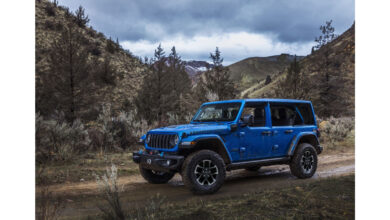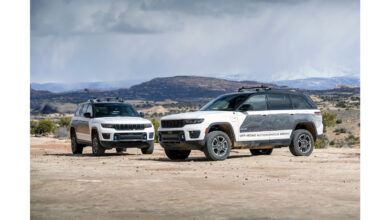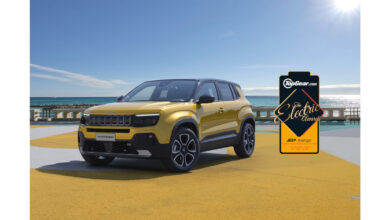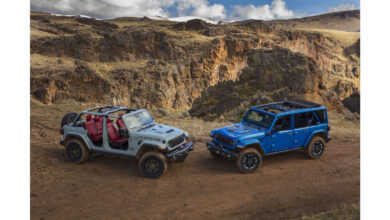The journey towards the Lancia Design Day: the “brutal” design of Stratos, Rally 037 and Delta
Stratos, Rally 037, and Delta racing “beasts” were born to win with their perfect balance of primary geometric shapes aimed at reaching the best performance. The round tail lights, aerodynamic wing, and eclectic combination of primary colors in the cabin gave Lancia Stratos a futuristic design model which still remains contemporary. The “functional” and bold shapes on both the front and the rear of the Lancia Rally 037, along with its angular “calice”, make it the essence for Rally competitions. Delta’s iconic C pillar, inherited from the road models, offset the radical brutality of the enlarged wheel arches on a side.
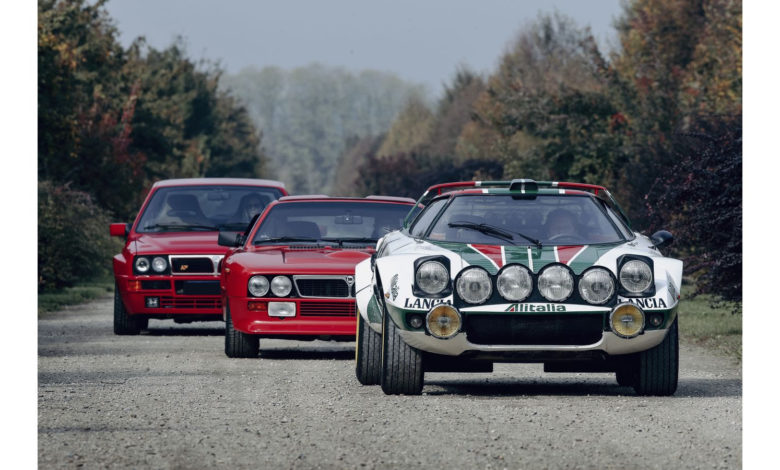
“To get inspired by cars like Delta, Rally 037 and Stratos is everyone’s dream. These three brutal and efficient cars made Lancia the most award-winning brand in the history of Rally,” stated Luca Napolitano, Lancia CEO. “Their primary shapes, radical geometries, round taillights, and aerodynamic winglets are all elements that are part of our design history and have inspired us for the future models of Lancia.”
Lancia Stratos “fits like a running suit that shapes the muscles”
Lancia Stratos was actually a “brutal and efficient” race car born to win. It broke the mold as it was so different from other models of that period. Inspired by the 1970 “Strato’s Zero” prototype — made by Bertone from a design by Gandini — the final version was introduced in 1971 with a futuristic wedge shape and a V6 engine from the Dino 246 Ferrari. The front is sharp and blends well with the wheel arches, while the slanted windshield incorporates the front pillar and continues to the side windows. The roof declines vertically on the rear window, which is embraced by the large engine hood. Standing out on the rear, there are round tail lights and an aggressive wing. When Nuccio Bertone, the inventor of the prototype, saw the final version of the Lancia Stratos he said “it fits the driver and the co-driver like a running suit that shapes the muscles.”
Everything in this vehicle was designed for Rally races, starting from the hood and the trunk’s light shells —including their respective fenders — which include a larger opening for quicker race repairs. Plus, the Lancia Stratos interiors were also revolutionary, as they focused entirely on the driver and were designed to reach results and stir emotions: two seats and just two compartments for the racing helmets, which is a distinctive feature on the road version, as well. The so-called “color-blocking” of the interiors creates a continuous contrasting effect, part of Lancia typical eclecticism, through the use of the primary colors like the blue, red, and yellow.
The Lancia Stratos HF Group 4 won the Monte Carlo Rally three times in a row and two more titles in the World Rally Constructors Championship (in 1975 and 1976), and likewise in the European Drivers’ Championship, followed by the victory of Sandro Munari in the FIA Rally Drivers World Cup in 1977.
And starting from 1975, Lancia Stratos featured the white and green Alitalia livery, with the Italian Flag badge of the airline company logo, split in two and harmonized into a wedge to create one of the most beautiful liveries in the history of Motorsport.
Lancia Rally 037, the aggressive and minimalist style of the 1983 World Rally champion
With “functional” and sharp shapes on both the front and the rear, the Lancia Rally 037, better known as “037” since this was the project code name, is a pure sports car that recalls the famous victory of David over Goliath. Lancia Rally 037 was the last two-wheel-drive vehicle to win the World Rally championship in 1983, winning over stronger all-wheel drive competitors.
Its original mixed monocoque and tubular structure was designed by Pininfarina atelier, and displayed an aggressive and elegant body, capable of providing significant aerodynamic load. To maximize its efficiency, it was created in polyester with fiberglass reinforcements, with the two light hoods of the engine and trunk that could be completely disassembled.
The minimalist and rational interiors are essential for a Rally vehicle, as well as some of the aerodynamic “appendages” on the pillar and the tail, including a striking rear spoiler, that made it even better performing.
Created on the basis of the Beta Montecarlo, Lancia Rally 037 was not designed to be produced in big quantities being the road vehicle production preparatory to facilitate the entrance into the Rally world.
Its official debut in its road version took place at the Turin Auto Show in 1982. The following year, in 1983 the Lancia Rally 037 won the World Constructors’ title, took the second place in the World Drivers’ Championship, and the European and Italian Championship with Miki Biasion, who shortly after would compete with the official Lancia Martini team.
The design of the Lancia Delta, the most successful Rally car of all time
By simply pronouncing the name Delta, car enthusiasts and Rally fans throughout the world shudder. And more than that 1988 instantly comes to mind, when the Delta HF 4WD, which marked the entry of Lancia into the sector of the all-wheel-drive sedans, evolved into the iconic Delta HF Integrale. It is remembered by everyone for its aggressive front, with the enlarged air duct and expanded wheel arches with its larger tires.
Over the years, the model was enriched with a series of technical and stylistic improvements.
Delta HF Integrale 16V with the striking “bulge” on its engine hood, which had to host the new engine head, was followed by the Delta HF Integrale 16V Evoluzione, where the fenders became even larger and a striking spoiler appeared at the bottom of the roof. The Italian brand produced the most successful Rally vehicle of all time starting from this extraordinary compact road vehicle. In fact, the four-wheel drive Lancia Delta HF, in four evolutionary versions, notched up: the Constructors’ World Rally Championship six times (1987-1992); the World Rally Drivers Championship four times (1987-1989 and 1991); the Production World Rally Championship (Group N) once, in 1987; the European Rally Championship six times (1987-1991 and 1993) and the European Rally Championship Production twice (Group N), in 1988 and 1989. The Lancia Delta HF Integrale was a dream for passionate of Motorsport and, at the same time, a nightmare for competitors who had to accept its supremacy.


